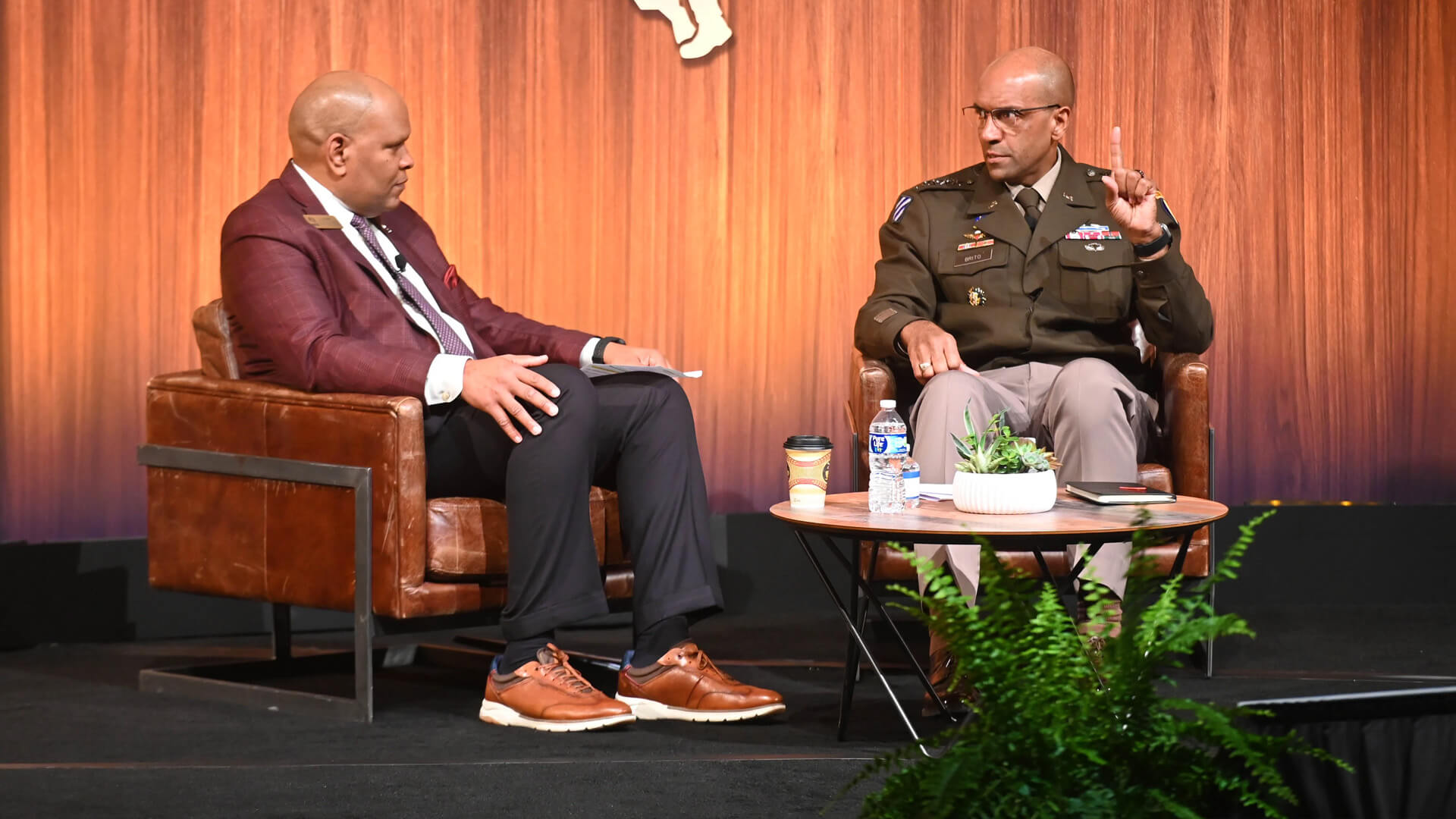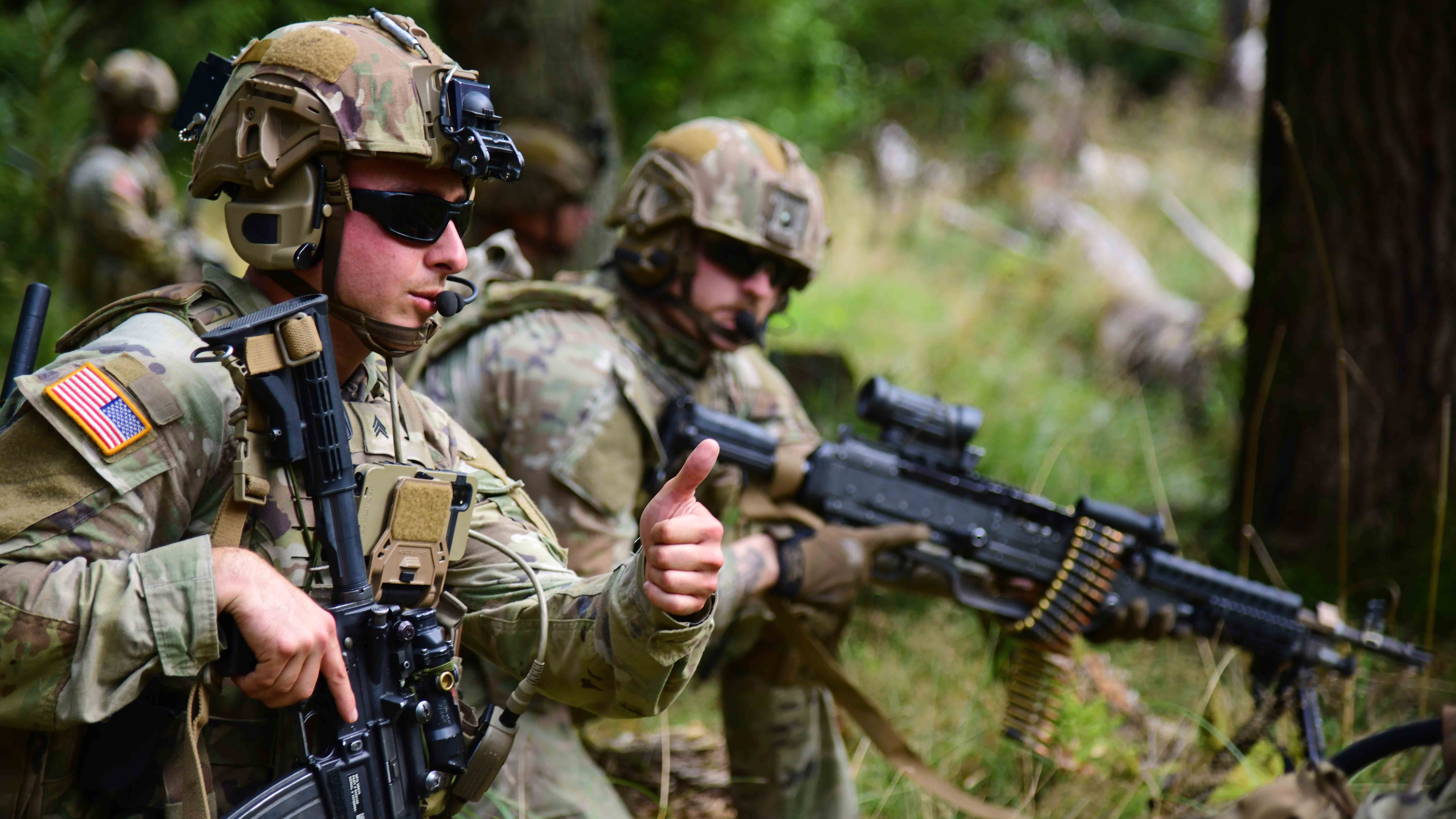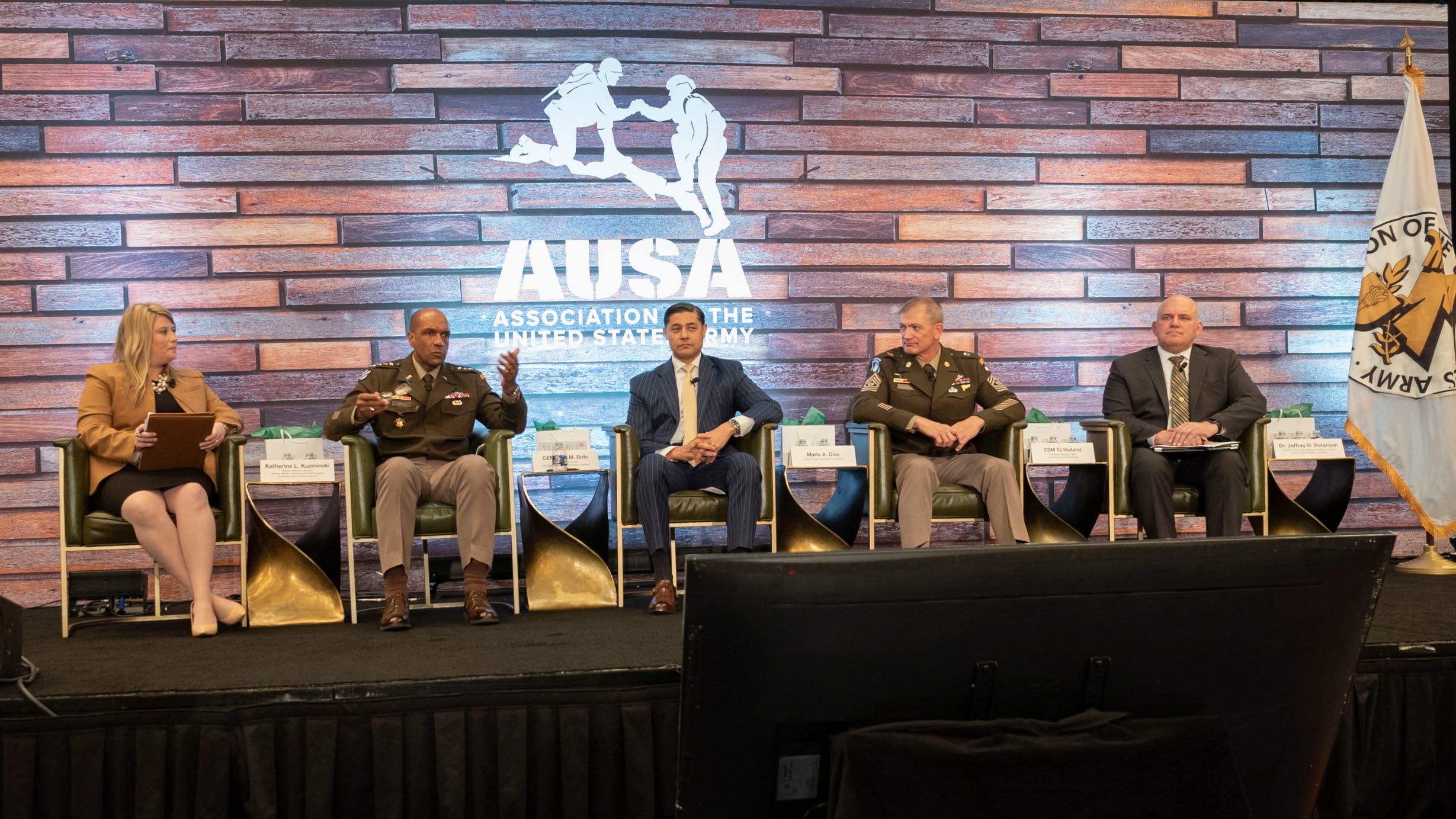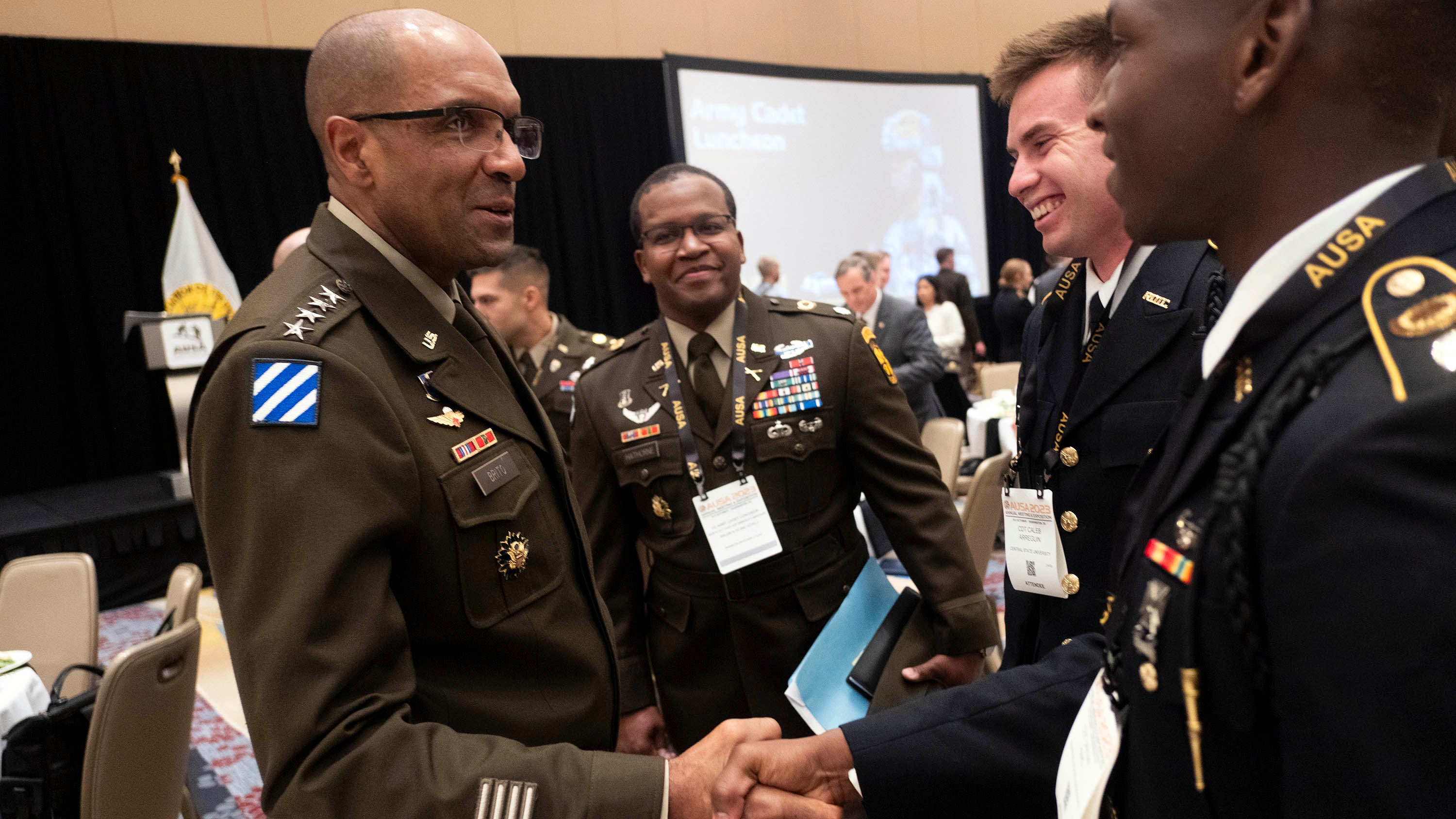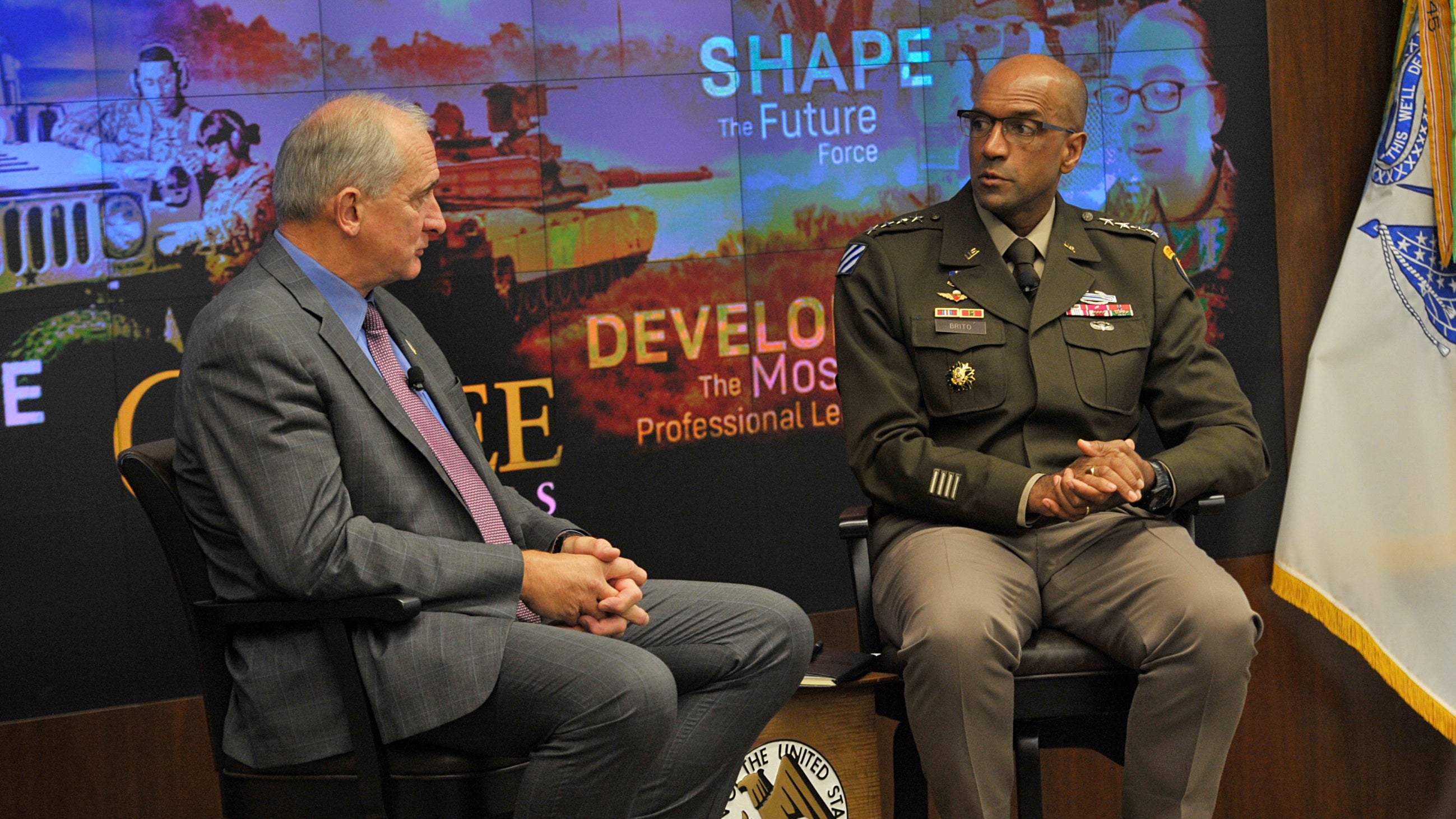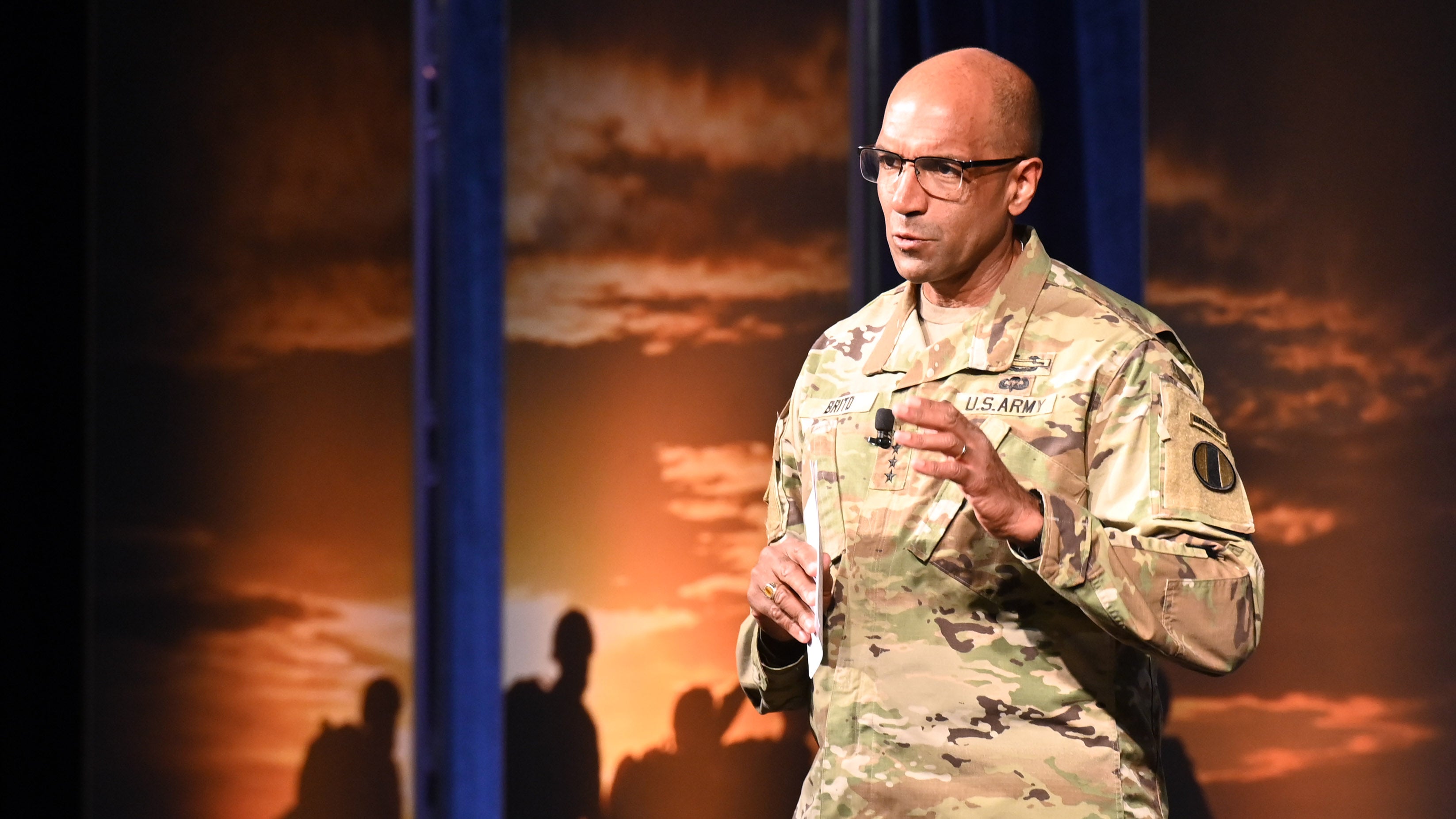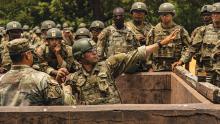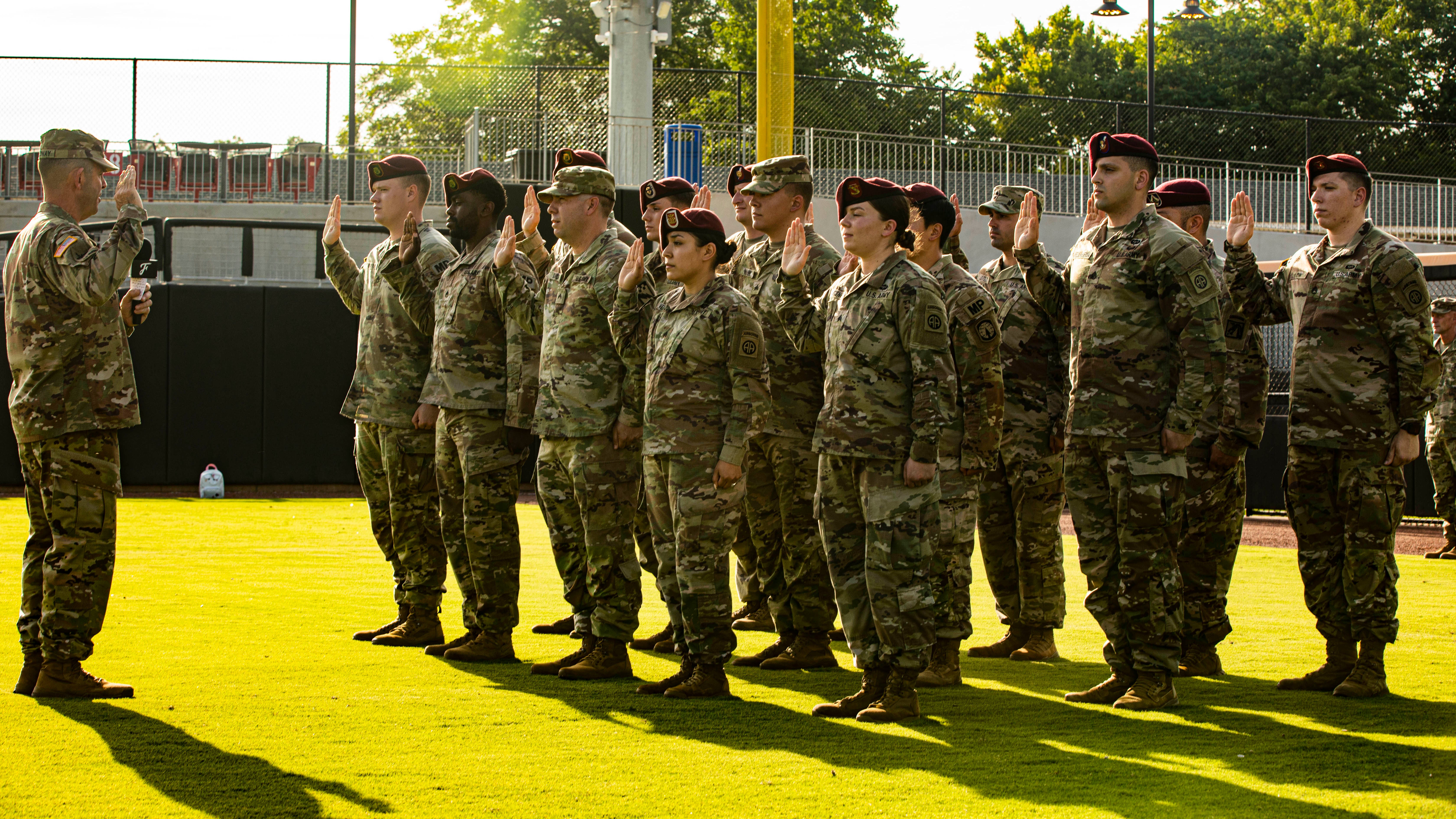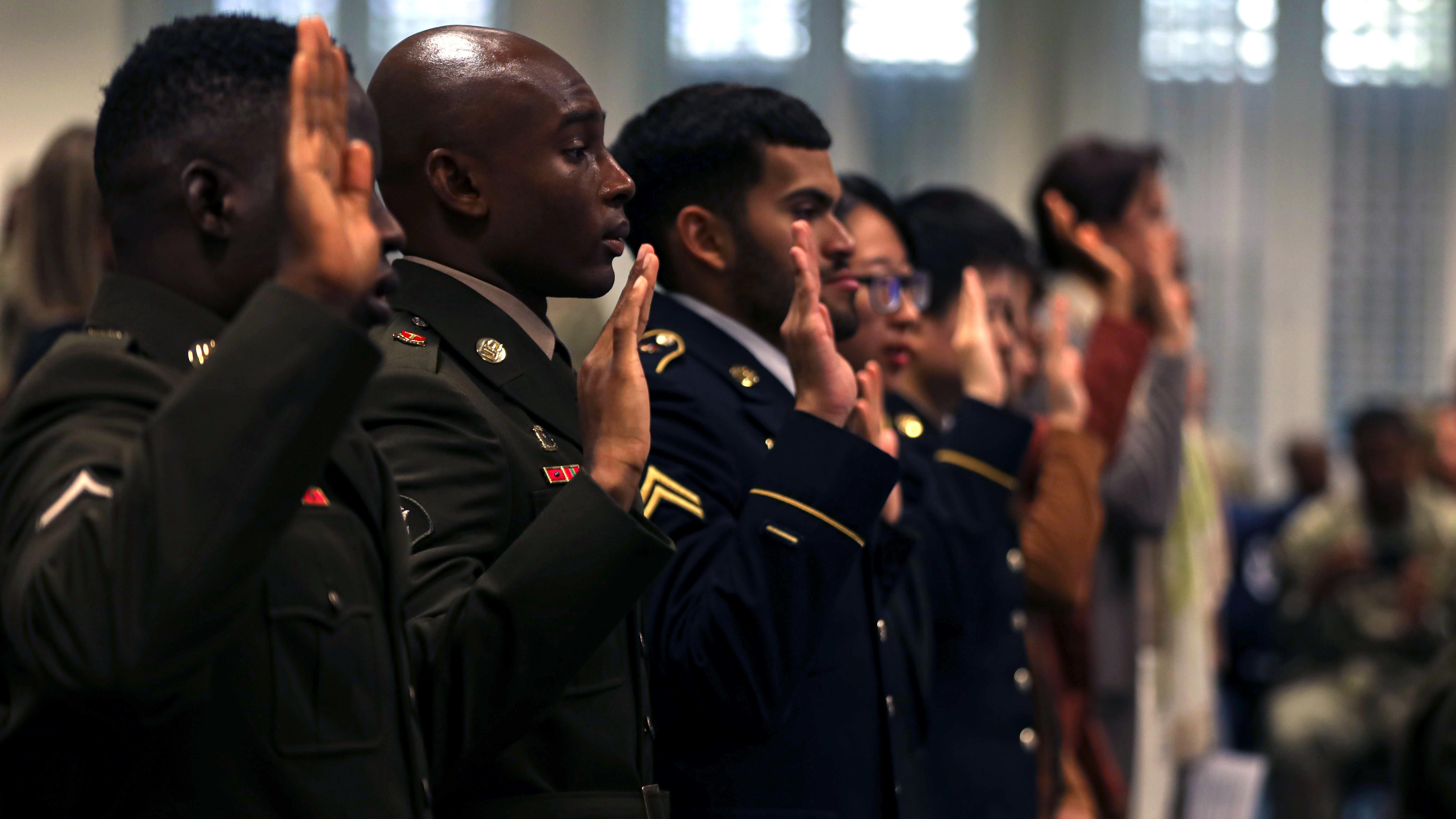Title
‘Don’t Be Afraid to Lead,’ Brito Urges Young Leaders
The Army’s future depends on leaders and their ability to foster character, competence and commitment, said Gen. Gary Brito, commanding general of the Army Training and Doctrine Command.
“I would challenge the future leaders out there … to take all of those [values] seriously,” Brito said.
Speaking during the recent 2023 Maneuver Warfighter Conference at Fort Moore, Georgia, formerly known as Fort Benning, Brito’s remarks came as Army Chief of Staff Gen. Randy George pushes for efforts to strengthen the Army profession.
